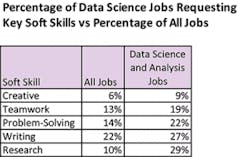Explain Data and Inspire Action Through Story
There’s nonstop buzz about date, big data, small data, deep data, thick data, and machines that are learning to analyze data. Many organizations are doing cool things that are supposed to improve our lives because of data. Of course, not all answers to organizational problems or opportunities will pop out of an algorithm.
Data is limited to recording the past by cataloging numerical artifacts of what has happened. As you grow into leadership positions,. You’ll spend most of your time communicating about the future state others need to create with you.
Communicating data shapes our future truth – our future facts. Insights from the past inform the direction we need to go and the actions we need to take, but getting others to move forward with these actions happens only when someone communicates well.
InvisiLight® Solution for Deploying Fiber
April 2, 2022Go to Market Faster. Speed up Network Deployment
April 2, 2022Episode 10: Fiber Optic Closure Specs Explained…
April 1, 2022Food for Thought from Our 2022 ICT Visionaries
April 1, 2022My book, Data Story: Explain Data and Inspire Action Through Story, is about communicating data, and that requires tailoring your message to those receiving it. Most data insights reveal the need for a recommendations (aka as a proposal, action plan, or report). Sometimes, approval for the action you’re recommending comes from the executive suite. The best communicators make data consider and clearly structured while telling a convincing and memorable story. Story also has the ability to help the listener embrace how they may need to change, because the message transfers into their heart and mind.
Creating visual and verbal clarity directs attention to key findings so others don’t have to work hard to understand why your recommendation should be approved. Using stories with a structure so inherently powerful, others can recall and retell it. Mastering the skill of efficient and inspiring communications pays great dividends.
Communicating data effectively isn’t about creating sexy charts and showcasing your smarts. No, it is about knowing the right amount of information to share, in what way, and to whom.
Invest Time in Communication Skills
No matter what your role, your career trajectory will get a big lift from knowing how to first understand, then explain, findings in data well. Consider this career progression by investing in communications skills:
1. EXPLORE – Individual Contributor
Identify a pro0blem or opportunity. Explore and analyze data for others to interpret.
2. EXPLAIN – Strategic Advisor
Rsolve the problem or opportunity. Explain your point of view through story-structured recommendations (such as in a Slidedoc™).
3. INSPIRE – Leader
Inspire action in others by delivering a presentation that makes data stick.
While the number of jobs that utilize data is increasing rapidly across all industries, a command of data science isn’t the skill most desired by employers — strong communication is.
If you learn how to communicate data clearly and persuasively, you will stand out from others.
In late 2018, Jeff Weiner, CEO of LinkedIn, shared findings of a study the company conducted on skills gaps in the work force. Using their alent Insights tool, job opening posted online where compared to the skill sets of candidates available to fill them. The number one skills gap was soft skills. Out of a soft skills gap of a whopping 1.6 million, 993,000 required oral communications skills, and 140,000 required writing skills. Weiner concluded that people with strong communication skills will not be replaced by emerging technology such as artificial intelligence.
Another body of research conducted by Burning Glass Technology for IBM found that employers require data scientists to be more proficient in soft skills than almost all of other job. They want employees who can couple data exploration with strong problem-solving and writing skills. (Source: Matt Sigelman, "By the numbers: The job market for data science and analytics," Burning Glass Technologies, February 10, 2017)
From the research:
These soft skills are rarely developed through coursework in science, finance, or statistics; they’re cultivated in the liberal arts disciplines. We can’t all go back to school to learn them, but the good news is that the methods of communication addressed (Ed. Note: in this book and these articles) help close the skills gap.
Become Like the Mentor in a Story
A mentor plays an important role in most stories. At a moment when the hero is stuck, the mentor provides the insight that shows the way – giving others just what they need, in the nick of time, to make them successful on their journey, Usually the mentor has a magical gift or tool they’ve mastered that the hero will need, as when Obi-Wan Kenobi gave Luke a lightsaber and taught him about The Force.
What does this have to do with data? When you use your data to provide timely and critical guidance to decision-makers, you change organizational outcomes. You become the mentor, and your data is the magical tool that gets them unstuck on their journey. Giving others data in the nick of time brings greater success in reaching a desired goal.
Use Data as a Magical Tool
There are 3 ways to use data as a magical tool:
REACTIVE – Use data after it’s collected to sound an alarm so others know there’s a problem.
PROACTIVE – Use data to proactively avoid or accelerate something.
PREDICTIVE – identify patterns to anticipate what might happen next.
Those who develop this skill are likely to become highly respected go-to advisors, chosen to participate in higher profile forms of decision-making.
Like this Article?
Subscribe to ISE magazine and start receiving your FREE monthly copy today!
This article, providing an introduction to the science of story, contains excerpts from the book Data Story. Upcoming articles in this series cover "Communicating to Decision-Makers", and "Structuring an Executive Summary as a Data Story", and will appear in future issues of ISE magazine.
About the Author: Nancy Duarte is CEO of Duarte, Inc., a large creative firm in Silicon Valley, with an additional office in Brooklyn, New York, and author of Data Story: Explain Data and Inspire Action Through Story (Ideapress, September 2019). For more information, please visit https://www.duarte.com/.





